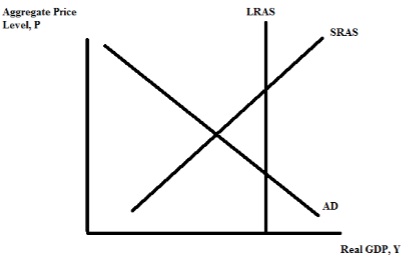Question 1. Use the simple Keynesian Model presented in class for this problem. You are given the following information about an economy: In equilibrium,
Ye = AE
AE = C + I + G + (X - IM)
C = a + b[Y - (T - TR)]
Y = C + (T - TR) + Sp
Yfe = 320 You are also provided the following table:

For this problem assume that (T - TR), I, G and (X - IM) are all autonomously determined outside of the model. Assume that the marginal propensity to consume and autonomous consumption do not change in this problem.
a. Write an equation for the consumption function with respect to disposable income, [Y - (T - TR)]. Show all the work you did to find this equation
b. What is the equilibrium level of GDP, Ye, for this economy? Show your wor
c. Given your answer in (b), describe this economy and how it is performing. Make sure you identify whether the economy is in a recession or a boom and what is happening to the level of unemployment in this economy. Explain the reasoning behind your answer
d. Suppose that this economy wishes to use fiscal policy to return the economy to Yfe. Describe fully the fiscal policy options that could be implemented to reach full employment verbally.
e. Provide the numeric values for the fiscal policy you described in (d). Make sure your answer provides two different types of fiscal policy that could be implemented in this economy so that this economy reaches Yfe. Show your work.
f. Suppose that this economy has passed a balance budget amendment so that any increase in government spending must be matched by an increase in taxes, or any decrease in taxes must be matched by a decrease in government spending. Calculate the cost of the fiscal policy to reach Yfe under the assumption that there is a balanced budget amendme
Question 2. Use the AD/AS Model discussed in class to answer this question. You are provided the following graph on an economy where SRAS is the short - run aggregate suppl y curve, LRAS is the long - run aggregate supply curve, and AD is the aggregate demand curve.

a. On the graph, l abel the full employment level of real GDP, Yfe, the short - run equilibrium level of real GDP, Y1, and the short - run aggregate price level, P1.
b. Holding everything else constant, suppose that the government engages in fiscal policy in the form of increased government spending. Predict the short - run effect of this policy on the aggregate price level and the level of real GDP.
c. Return to the original situation. If the government does not engage in fiscal policy or monetar y policy, what will happen in the long - run in this economy? Be specific about the adjustment process that will result in this economy reaching its long - run equilibrium.